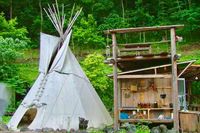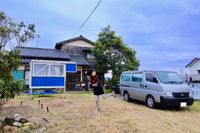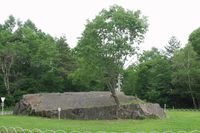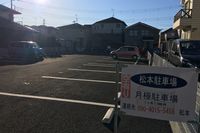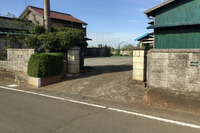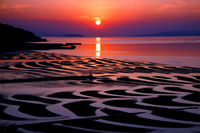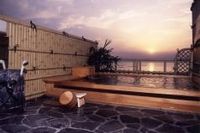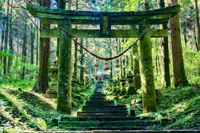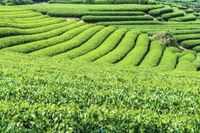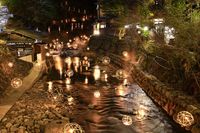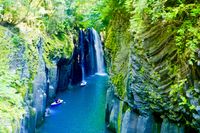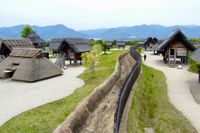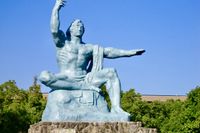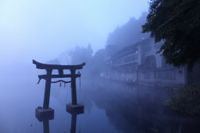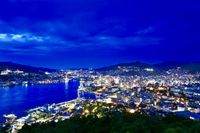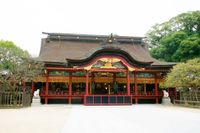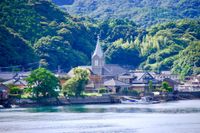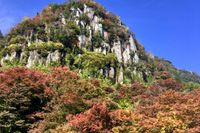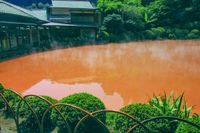Kumamoto Castle
熊本県/熊本市中央区本丸

Description
This is one of Japan's three most famous castles, built in 1607 by Kato Kiyomasa. The castle is famous for being the place where Miyamoto Musashi, the most famous Japanese sword warrior and author of the martial art "book of five rings" spent his later years, as well as being the scene to the Southwestern War, the final civil war in Japanese history. The main hall known as the "Shokun no Ma" represents the grandiose and opulent Daimyo culture. The castle was damaged by the Kumamoto earthquake of 2016, but has been restored.
Homepage
Address
Nearby Car Night Spots
Nearby Activities
Ranking Stations
Shin Meishin Suzuka PA (inbound) RV Station Suzuka * With Power!
¥2,200〜
/ per nightMie Yamamotocho, Suzuka-shi
4.4
(123)Nearby Drive Spots
Okoshiki Beach
This is a coastal area in the western part of Kumamoto prefecture. The name comes from a 2000 year old legend where an emperor on an expedition to Kyushu carrying an Omikoshi (portable shrine) is said to have stopped and stared in enchantment at the coastline. The beach has a beautiful coastline punctuated with the waves and wind.
Mount Aso
This is an active volcano situated in the Aso region of Kumamoto prefecture, where plumes of smoke can still be seen. An eruption from around 90,000 years ago formed the largest caldera rock formation of 380 square kilometers, which provides stunning views. At the foot of the mountain, there are camp facilities, as well as horse riding and star gazing which can be enjoyed by visitors.
Unzen Onsen
This is a hot spring in Unzen city, built in 701 AD. From the Edo era(1603-1868) up until the Meiji era(1868-1912), it developed as a resort area for many foreigners who visited Nagasaki, with Sea Bolt being one of the first. The 30 Onsen have the smell of the naturally occurring sulphur and smoke, known as the "Unzen hell". It also has a sad history of being witness to Christian martyrdom.
Kamishikimi Kumanoimasu Shrine
This is a shrine with an unknown date of construction, with the shrine deities being the Izanagi no Kami (Male God) and Izanami no Kami (Goddess), and the Iwagimi Shogunate. There is a mysterious path up to the shrine of 260 steps, at the top of which is situated the shrine. It is said that the sacred Nageia tree brings fortune in love with the, Ugeto rock bringing fortune for success. Because it became the stage of animation "It is also the setting for the anime "Hotarubi no Mori e", and many fans make the trip here to see the original setting in the flesh.
Nabegataki Falls
This is a hot spring in Unzen city, built in 701 AD. From the Edo era(1603-1868) up until the Meiji era(1868-1912), it developed as a resort area for many foreigners who visited Nagasaki, with Sea Bolt being one of the first. The 30 Onsen have the smell of the naturally occurring sulphur and smoke, known as the "Unzen hell". It also has a sad history of being witness to Christian martyrdom.
Yame Chuo Tea Garden
This is a tea field situated in Yame city. It is the 6th largest tea producer in Japan, and makes up 3% of Japan's tea. Tea leaves have been grown here since the Sengoku era(1467-1600), and has spread in prominence and popularity since them.
Kurokawa Onsen
This is an onsen in the northern part of Mount Aso. It is one of the most well recognized Onsen areas, with 2 stars from the Michelin tourism guide. It was built with the concept of the town roads being a "corridor" with each guest inn as a "room", and was built whilst maintaining integration with the natural surroundings. It is popular for those visiting several different Onsen.
Ouo Shrine
This is a shrine built around 1700. There is a legend that says that an officer who was stranded on Okinoshima island was saved by a large fish, and built Torii gates in the water, which is now commemorates as a protective sea God. At low tide, it is possible to walk through the Torii gates along the sea path, but these are submerged at high tide.
Takachiho Gorge
This is a canyon of the Gokase River, located at the prefectural border of Miyazaki and Kumamoto. A cliff that reaches 80-100 meters high continues over into the distance for 7 km. It is a mystery of nature formed by the large eruption of Mount Aso. It is the land of "Tenson Korin" (who is believed to be a descendent of the grandson of the great God Amaterasu, Ninigi). Boat trips are also popular in this area.
Yoshinogari Historical Park
This is the largest ruins area from the Yayoi era (around 500 BC). The biggest characteristic is the collection of relics associated with the defense of the settlement, with about 2.5 km of outer bunkers and fences. In addition, as from excavation survey findings, pit dwellings, tall floor warehouses, observation towers, tombs, bronze ware, copper mirrors and the like have been discovered over an area of 36 hectares, making it a very important historical site which tells the story of the lives of people in ancient times.
Ureshino Onsen
This is an area with a small hot natural hot spring in Southern Saga prefecture. It has 1900 years of history with several traditional Japanese inns along the Ureshino Rivers, making it one of Kyushu's largest Onsen towns. The Onsen is popular with women due to the water's skin enhancing properties. It also has a special local product known as Ureshino Onsen tofu.
Nagasaki Peace Park
This is the place where nuclear weapons were dropped in the Pacific War in 1945, three days after Hiroshima bombing. The bombing on August 9th destroyed an area of around 6.7 million square meters, with about 74,000 people dead. A park was built in 1950 for wishes of peace. In the center is a "Peace Prayer statue" that symbolizes the love of God and the mercy of Buddha, with the right hand representing the threat of the atomic bomb, the left hand representing peace, and the closed eyes praying for the victims' souls.
Yufuin Onsen
This is an Onsen close to Kinrin Pond, which is at the foot of Mount Yufu. The volume of hot spring water is the second largest in Japan. It has the distinct characteristic of having numerous luxury traditional Japanese lodgings which are integrated into the natural surroundings with the minimum of disturbance. The central Yufu street in this area has many fashionable miscellaneous goods shops, and restaurants, making it popular with visitors young and old.
Mount Inasa
This is a 333 meter high mountain in Nagasaki city. There is an observation deck which offers splendid views of Nagasaki port below, but is mainly known as one of the top 3 night view spots in Japan. In fact, it is known as one of the top 3 night view spots in the world, along with places in Monaco and Hong Kong.
Dazaifu Tenmangu Shrine
This is a temple built in 919 AD by Fujiwara Nakahira. The great heavenly God Sugawara Michizane is enshrined in this temple, and there is splendid Shinto architecture above the grave of this God. It is a popular site of reverence for students, as this temple God is known as the deity for learning and study, and along with the Kitano Tenmangu Shrine in Kyoto, this is the main head temple of the Tenmangu shrine group, which consists of around 12,000 shrines. The area is famous for Tobi Ume plums, and each year, a priestess will donate a plum tree to the country, and is also used for plum wine.
Mount Yufu
This is a 1583m high active volcano in Yufu city. Due to its resemblance to Mount Fuji, it is sometimes called the "Bungo Fuji". It has been historically known as a site of worship and object of reverence, and also appears as a holy mountain in the "Kojiki" anthology. It is ideal for those who don't wish to climb the mountain as well as the railway is also popular with train enthusiasts, with the route having amazing scenery of Mount Yufu in its backdrop.
Sakitsu Church
It is a village registered as a World Heritage Site, and was a town of "Kirishitan" (a Japanese catholic movement). Amakusa Shiro, the 16 year old supreme leader of the movement, led 40,000 oppressed Christians into battle, fighting the Tokugawa Shogunate in the "battle of Shimabara", which took place here. Even after the defeat of the Christian army, in Sakitsu, many Christians continued their faith in secret, whilst pretending to be buddhists on the outside.
Yabakei Gorge
This is a valley in the northern part of Oita Prefecture, one of the three most famous in Japan. It is an extremely old value which has stellar views of the rock formations made by the volcanic activity from around 2.6 million years ago and has views of numerous unusual rock formations. There are countless spectacular scenes along the way, and they are collectively referred to as the sixty-six landscapes of the Yabakei Gorge.
Okawa Uchiyama
This is a town known as the "Secret kilin town" from 1675. The Nabeshima clan, inhabitants of the town were the first to master porcelain production, and established the "clan kiln" as well as other technologies to improve the quality of their products, and it was said that steps were taken to ensure that these techniques were not known to others to copy. They maid luxury porcelain products for the Daimyo, Shogunate and imperial court up until 1871, but is still cherished today as a porcelain specialist town where traditional production kilns can still be viewed.
Beppu Onsen
This is a hot spring bath in Beppu City. It has 1300 years of history, and boasts the highest volume of natural hot spring water in Japan. It was built around the 8 Onsen towns known as the "8 baths", and due to the sulphuric smells, it has a famous "Beppu hell tour" with the "water hell", "blood pond hell", "white pond hell" and "tornado hell". There are also plenty of sand baths and bedrock baths.

